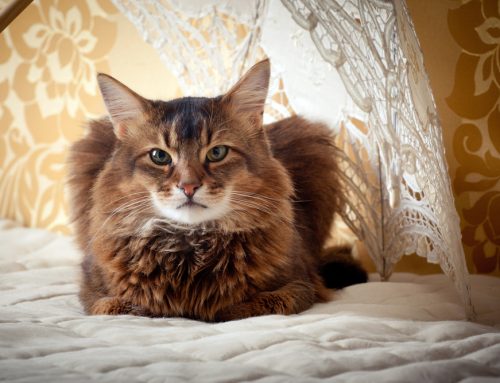Potbellied pigs are charismatic, clever, and loving companions. With the right care, they can make a much-loved addition to your home. However, it is common that new owners become overwhelmed by their needs and size. It is important to note before acquiring a potbellied pig, this pet can weigh anywhere from 60 to 250 pounds, grow to be between 12 and 20 inches tall, and live upwards of 20 years. With that understanding, here are the basics of caring for your new companion in an effort of making your transition to pig-parent as smooth as possible.
Housing:
Pigs are smart beyond imagination and are willingly potty-trained. They can be trained in an indoor litter box or to go outside. If you plan on your pig having access to your home, you will want to pig-proof and limit the areas they have access to. Pay attention to electrical cords, steps, food within reach, etc. Pigs become destructive in homes when they do not have enough space and enrichment. Therefore, when spending time indoors have plenty of toys and activities to keep them entertained. Dog toys designed to hide treats work well. Rooting is a natural behavior, so another alternative is a rooting box filled with material for them to sort through. Access to the outside is essential for any pig as they need exercise to stay a healthy weight. If you choose to house your pig outdoors important considerations should be made in keeping them comfortable in heat and cold. In the summer, access to mud or kiddy pools routinely filled with water is necessary to keep them cool as well as shaded areas to prevent sunburn. In the winter warm, dry bedding, such as straw, as well as blankets to burrow in and heat lamps are all necessities.
Diet:
Potbelly pigs can become obese very easily because of their unrelenting search for food. For this reason, we recommend consulting with your veterinarian for feeding guidelines at every stage of life. Potbellies should eat a balanced pig pellet. Several brands exist but the most important part is that it is designed for the pet pig as opposed to those marketed to production or growing animals. To keep pigs slim they can be supplemented with low-starch fruits and vegetables. These are commonly fed as “salads” and can be broken up throughout the day to satisfy their search for food without adding excess calories. Food can be spread through the yard or house to entertain the drive to root and search for meals.
Behavior:
Early castration of male pigs and spaying of female pigs can help to eliminate unwanted aggression as well as harmful health conditions in older age. Providing ample space and enrichment activities is the most essential part of warding off aggression. Pigs are accustomed to needing to establish herd-hierarchy. Allowing them the “run of the house” can lead to conflict when they see you as another herd member and should be avoided.
Routine Health Care:
We recommend annual veterinary wellness exams as well as essential vaccinations and deworming. Your veterinarian can tailor which vaccines are necessary for your pig based on environment, travel, and other pets. We recommend having a fecal sample checked at annual appointments to determine if deworming is necessary. Pigs tusks will often require maintenance trims to keep them from rubbing their cheeks or gums. Tusk trims should always be done by a professional to ensure that no damage is done to the root of the tusk or gums of the patient. Pig’s feet grow continuously over time and are worn down by their environment but also often require trimming if they become overgrown.
Common Health Concerns:
Obesity is by far the most common reason for pet pigs to visit the veterinarian. Obesity can cause overgrown feet, arthritis, skin fold infections, and a fold that falls over their eyes causing blindness. The other side of the gastrointestinal problems are pigs that are not eating. Common causes of inappetence (lack of appetite) in pigs are gastrointestinal ulcers or blockage. Both conditions can be life-threatening and should be assessed by a veterinarian.
The other of the most common health concerns are dermatologic conditions. Light-colored pigs can burn easily in the sun and should wear sunscreen when outside as well as have access to shade. Dry, scaly skin can be common with weather changes and can be addressed with brushing to exfoliate dead flaky skin off. An excessively itchy pig or one with skin lesions should be seen by a veterinarian as mites and skin infections are common.
Lastly, pigs are overly sensitive to extremes of heat and cold. As discussed in the housing section proper planning should be made to keep them from overheating in the summer or getting hypothermia in the winter.







Leave A Comment